Grass seed vs sod — what’s best for your lawn?
Here, we breakdown the differences of grass seed vs sod
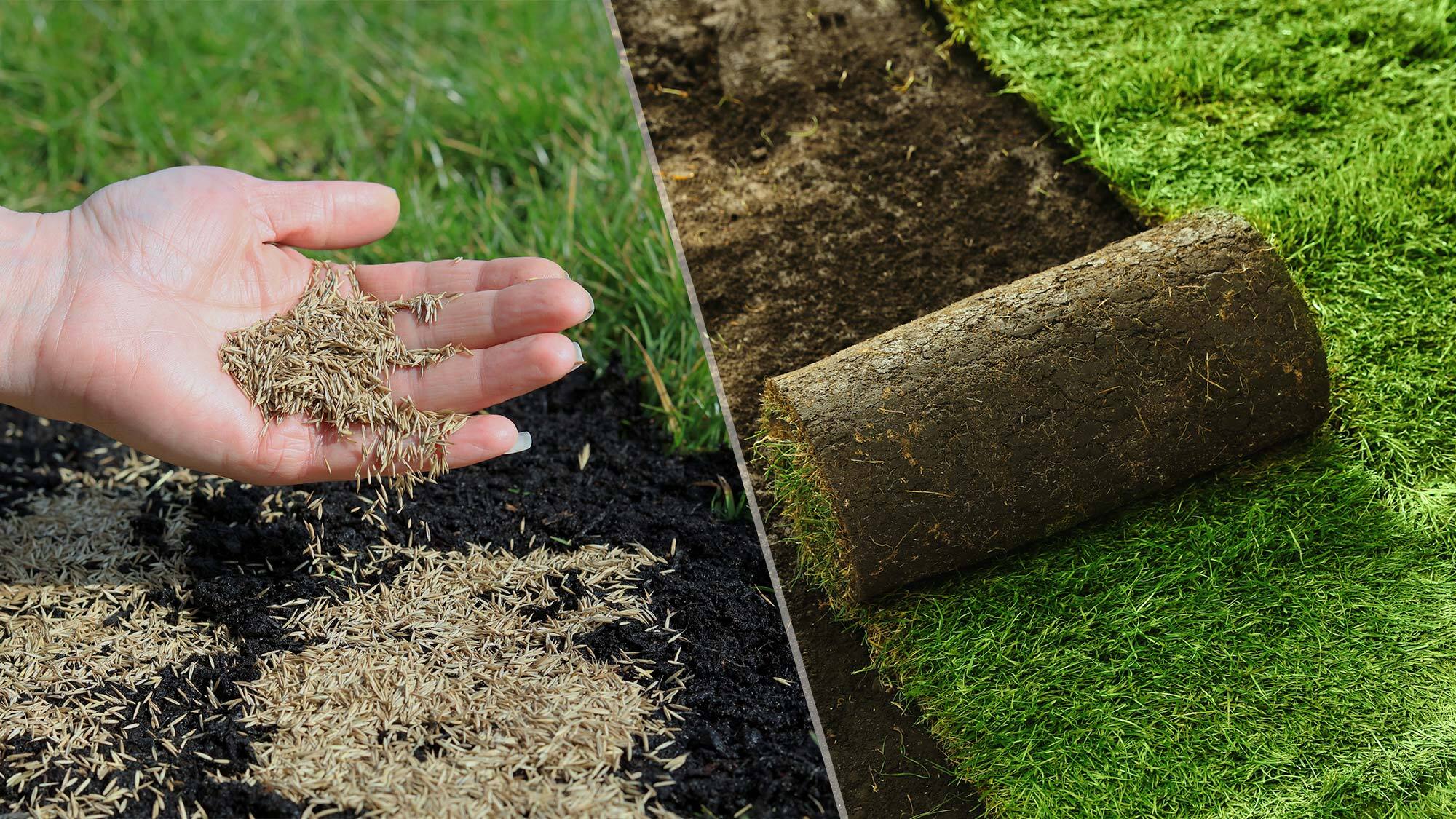
A thick green lawn is something to be proud of. Diligently mowing in stripes is a pleasant way to spend a sunny afternoon and will make your garden the envy of the neighbors. But when your lawn is tired, full of weeds and unsightly bare patches, it can become a bit of an eyesore.
Sure, there are ways to make your grass greener and ways to revive dead grass, but sometimes you need to bite the bullet and start again with fresh grass seed or sod.
However, figuring out whether to choose sod vs seed isn’t an easy decision. There are plenty of factors to take into account. So if you're undecided, read on as we explore the advantages and disadvantages of grass seed and sod.
If you want to know more about grass types, be sure to check out 7 of the best grass types to grow — and which to get.
Advantages of grass seed
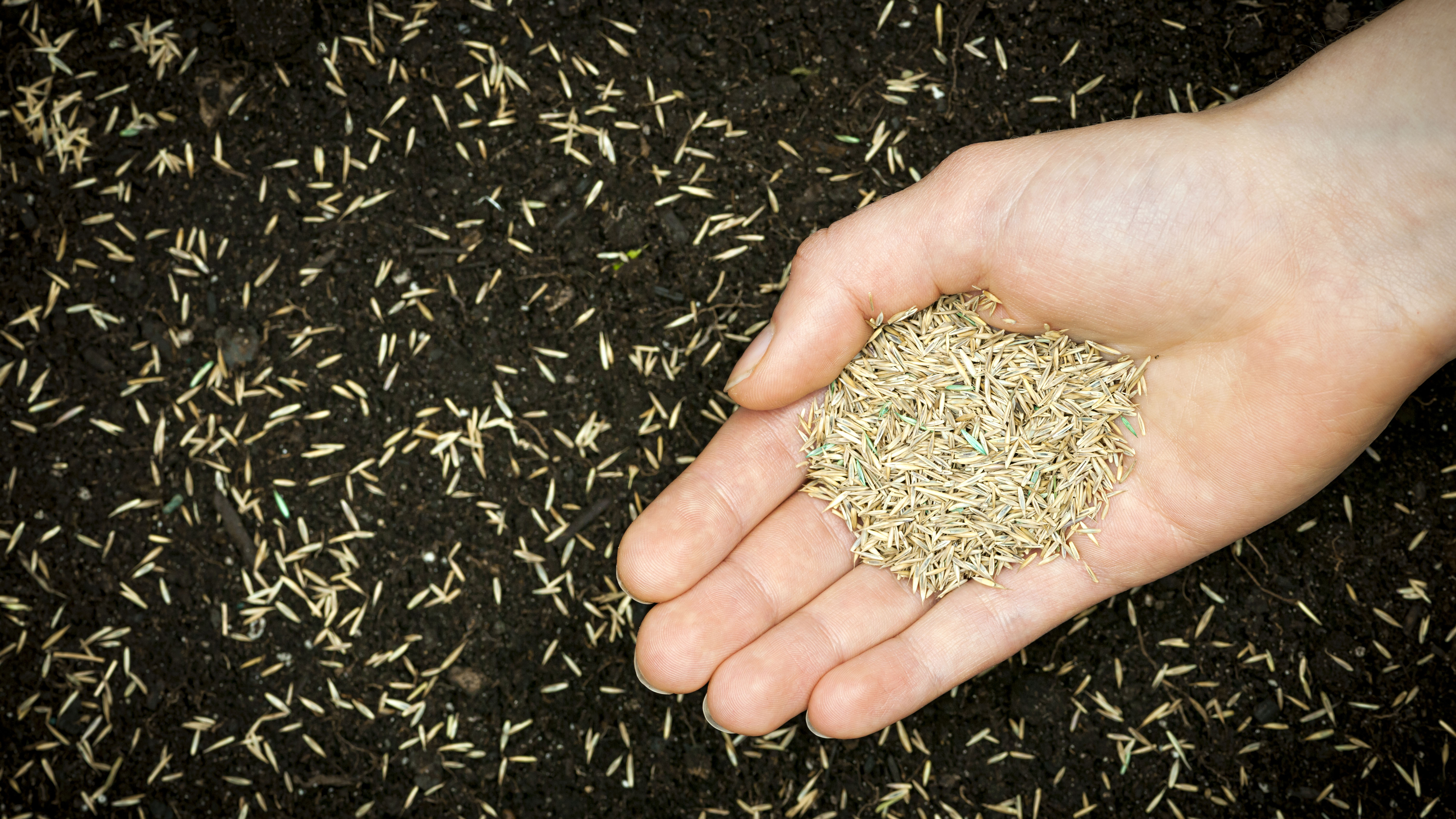
1. Can be used to thicken or patch an existing lawn
Grass seed is a great choice for fixing bare patches in an existing lawn. Often you just need to rake out the dead grass, loosen the earth slightly with a rake or fork, then simply add the seed. Similarly, if your lawn is generally okay, but not as thick and lush as you’d like, overseeding is an easy way to improve it, here's how to overseed your lawn and when to do it.
2. Easy to sow
Sowing grass seed is pretty simple, especially if you’re just patching areas. If you're using it to create a whole new lawn, you will need to take extra steps like adding a good topsoil and choosing the right variety for your garden. Follow our advice on how to plant grass seed and get a greener yard.
3. Inexpensive
Grass seed can cost as little as $0.20 per square foot, so it’s a cost effective way to grow a lawn. And even if you choose the most premium grass seed, it’ll still cost less than a pretty basic sod, meaning you could create a lawn with a top quality grass variety for less.
4. Can be stored
Unlike sod, which has to be laid very soon after you receive the delivery, regardless of the conditions, grass seed can be stored until you’re ready to use it. Plus, any leftover seed that you don’t use can be stored for maintenance and repairs.
Disadvantages of grass seed
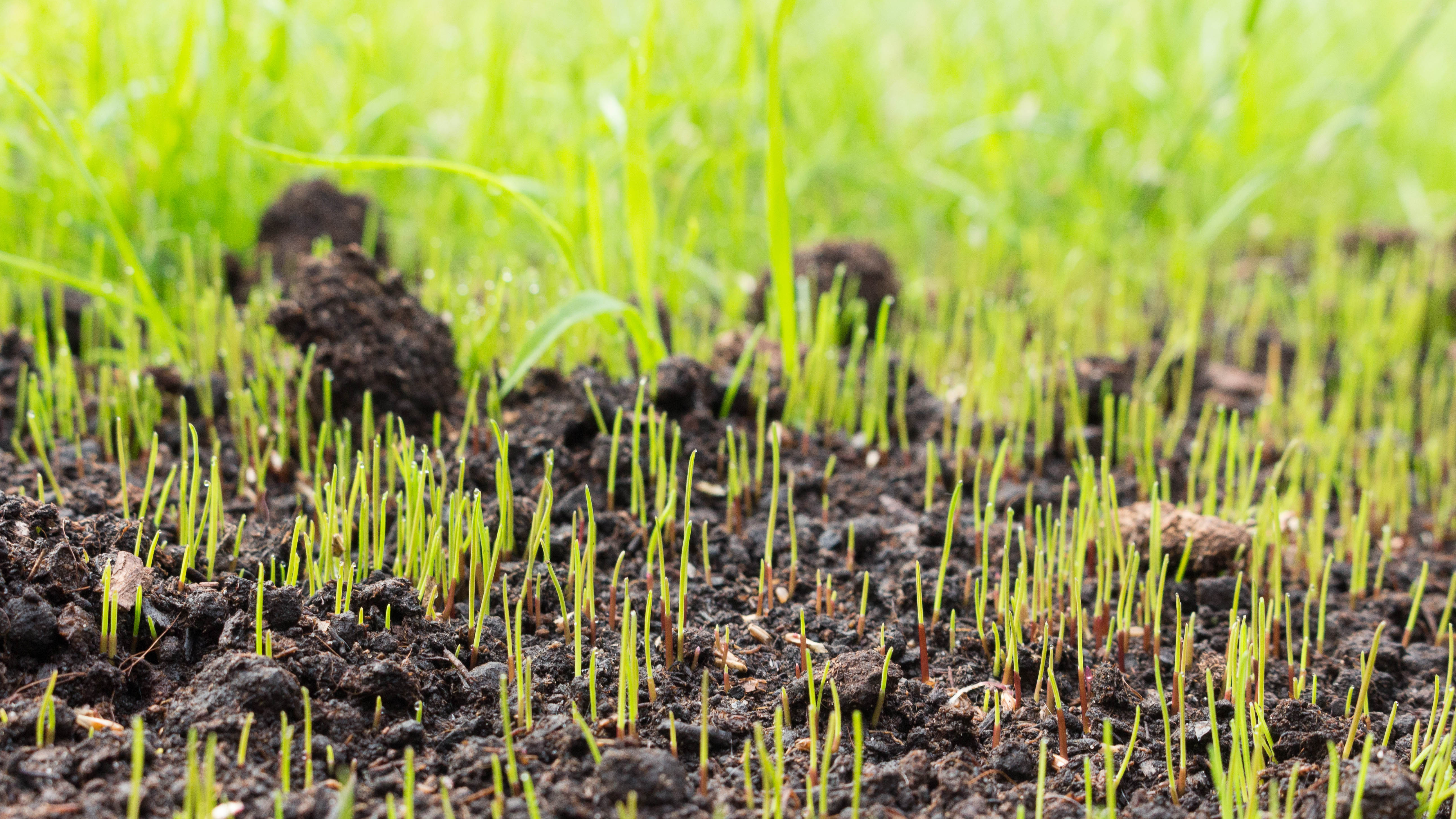
1. Takes time to establish
Depending on the time of year, germination can take up to 10 days. Then it’ll need 6-10 weeks to become fully rooted and established. In that time you’ll need to keep it well watered and avoid walking on the area, which is easier said than done if you have inquisitive children and pets.
2. Weeds can take hold during initial growth
During the initial germination and growth stage, there’s a lot of bare earth. This means other seeds, like those from weeds, can easily be introduced and start to grow alongside your grass. The plus side is that once you can walk on your new lawn, these should be pretty easy to spot amongst all that fresh new grass, so it should be straightforward to remove.
3. It can be washed off sloped areas
Creating a lawn on banked or sloped areas can be very tricky with grass seed. Water can wash all the seed off the slope, wasting all your time and seed. For these areas sod is better, as it can take root quicker and help stop erosion.
4. It can be eaten by birds
Grass seed is a tasty snack for birds and some smaller animals too, which might mean you lose part of your lawn before it even gets a chance to germinate. In areas where this is a particular problem, you may have to install netting to protect the area.
Advantages of laying sod
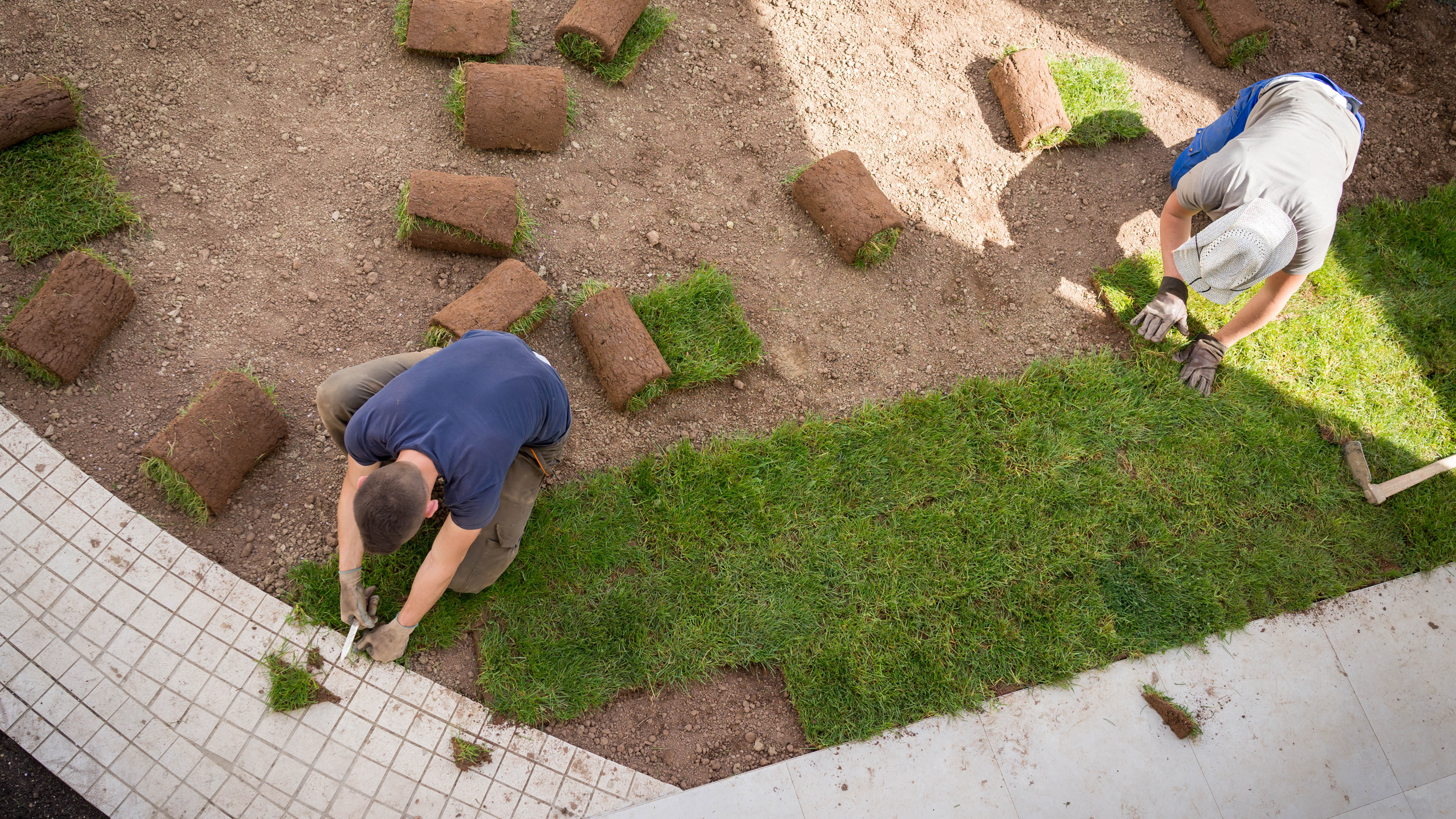
1. Instant visual impact
There’s something very satisfying about rolling out fresh green sod over a patch of bare ground. This is absolutely the way to go if you want immediate impact. Especially in areas like your front yard, where the lawn appearance is tied to the appearance of your whole house.
2. Eliminate all weeds
During the process of preparing the ground for new sod, all existing weeds will get dug up. And unlike seed, the thick nature of the fresh sod will make it harder for new weeds to penetrate. This means it should stay weed free for longer.
3. Quick to establish
Not only does sod provide an instant lawn, but depending on the time of year and the quality of the sod, it could take root in as little as two weeks. And as soon as it has rooted to the soil underneath, you’re good to walk on it. If you’ve got small children or pets, this stage can’t come soon enough.
Disadvantages of laying sod
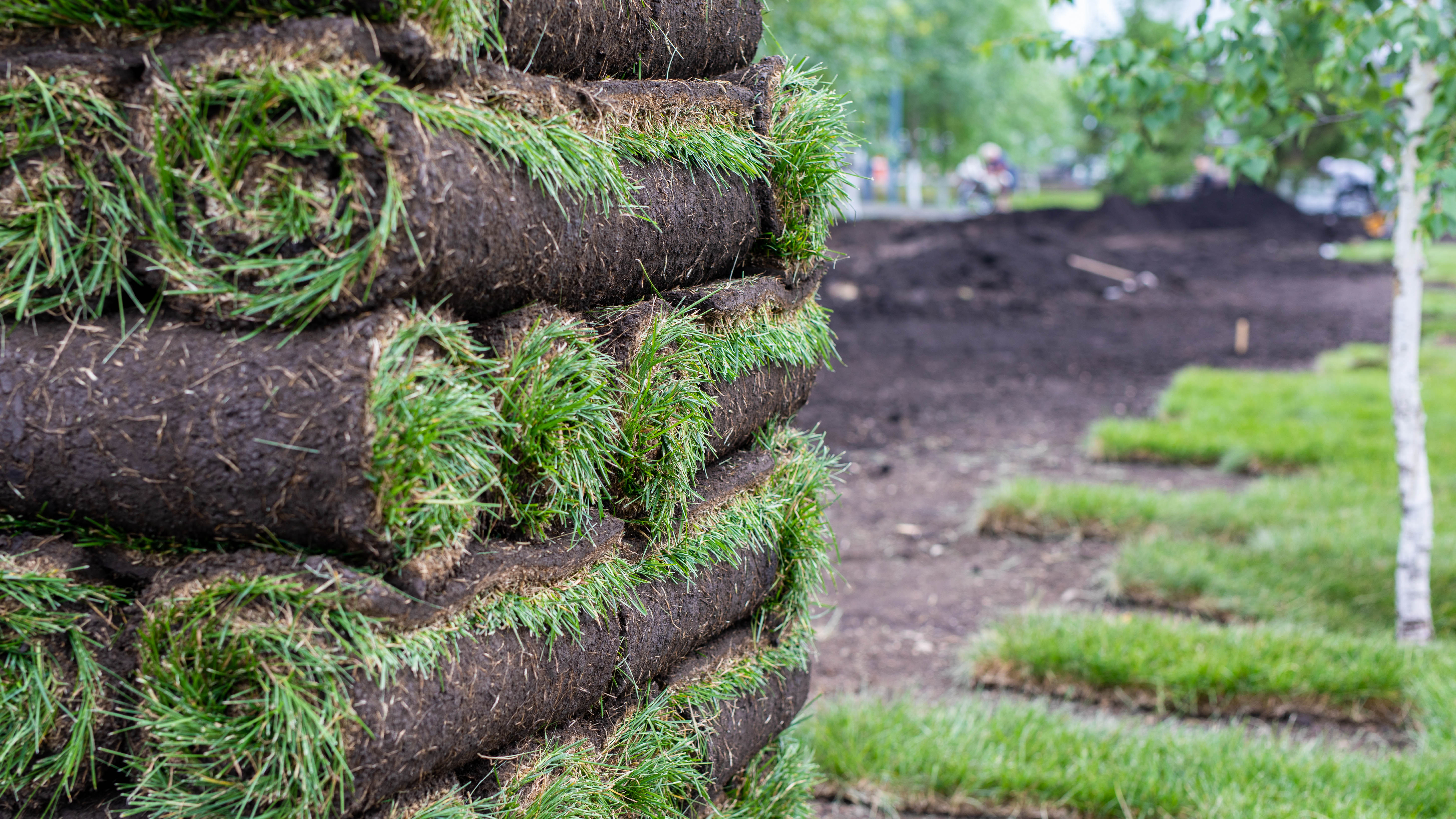
1. More expensive than seed
If you’ve blown the budget on hard landscaping or other planting, it might be difficult to justify the cost of laying sod. Depending on where you are and the quality of seed or sod you’re looking at, laying sod could cost $1 per square foot more than seed. This is quite a significant chunk of money if you’re creating a large lawn.
2. Ground requires proper preparation
If you think you can roll out your new sod over old, dead patches of lawn, think again. To create the best possible new lawn and give the sod the greatest chance of thriving, the ground underneath needs to have been properly prepared. All existing grass and weeds will have to be dug up, larger stones removed and depending on your existing soil, you may need to add a layer of topsoil. So while sod will indeed provide instant impact, the preparation stage beforehand can be quite lengthy.
3. It must be laid correctly for best results
To prevent gaps forming and ensure the sod beds in properly, it’s crucial that it’s laid correctly. While it’s not a difficult process, care must be taken to get it right. Walking on fresh sod is a no-no, so it needs to be laid systematically, taking care to stagger seams and butt pieces together closely. If in doubt, read our guide on how to lay sod.
Both seed and sod have a place when restoring your lawn. Your choice will ultimately come down to time, budget, and how quickly you need to be able to use the lawn.
In the meantime, you might want to brush up on your lawn care knowledge by reading about these seven common lawn care mistakes as well as how much you should water your lawn.
More from Tom's Guide
Sign up to get the BEST of Tom's Guide direct to your inbox.
Get instant access to breaking news, the hottest reviews, great deals and helpful tips.
Helen started reviewing home and kitchen appliances in 2007 at the Good Housekeeping Institute and has never looked back. She’s now freelance and reviews all sorts of appliances from her home in a pretty village in the UK. Despite having reviewed hundreds of coffee machines in her time, she’s only recently developed a love for coffee and a daily coffee habit, which makes tasting all those coffees much more enjoyable!

